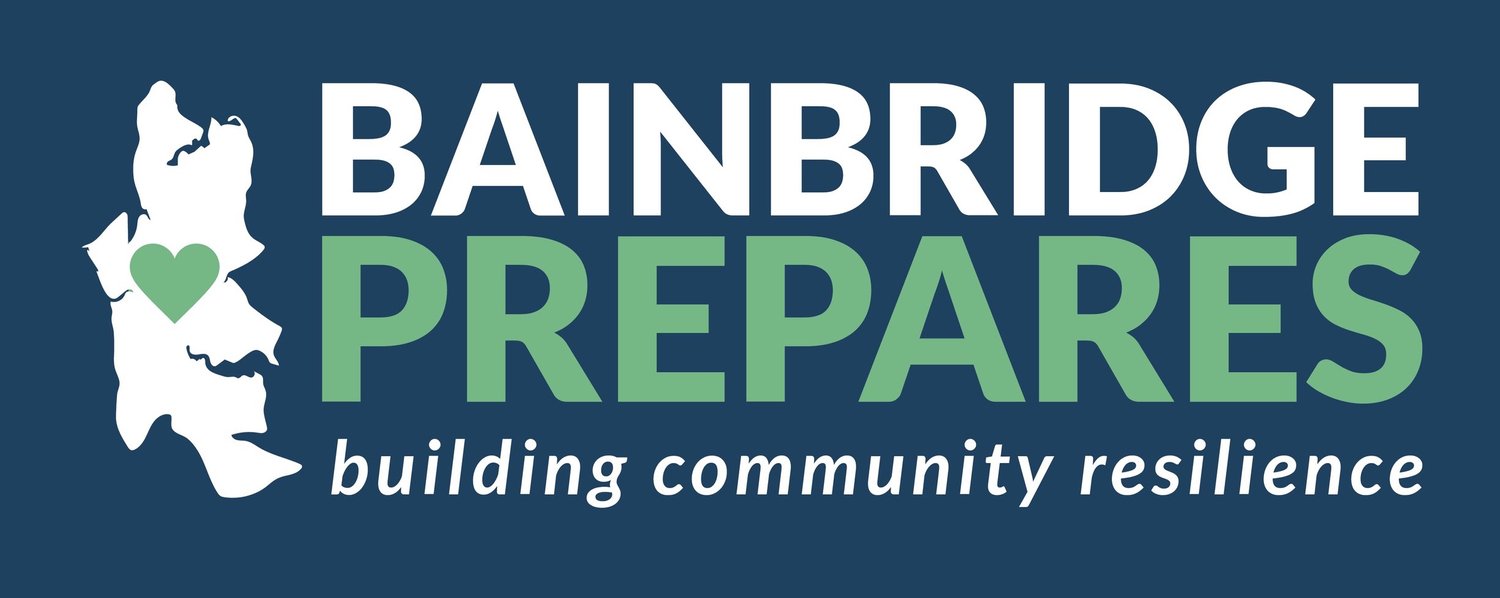WFR's "rescue" dozens at trauma exercise at Island Church
 This past April 21, volunteers of all stripes descended upon Bainbridge's Island Church for a simulated catastrophe. The "catastrophe" was a large-scale earthquake. The Church is one of the Island's emergency hubs, places scattered around the Island where people will seek medicalcare, psychological support, animal care, and shelter during such a mass casualty incident. The exercise was designed as an introduction to the hub system for volunteer emergency workers. The volunteers were testing out how to set up and operate a coordinated medical response at the hub.
This past April 21, volunteers of all stripes descended upon Bainbridge's Island Church for a simulated catastrophe. The "catastrophe" was a large-scale earthquake. The Church is one of the Island's emergency hubs, places scattered around the Island where people will seek medicalcare, psychological support, animal care, and shelter during such a mass casualty incident. The exercise was designed as an introduction to the hub system for volunteer emergency workers. The volunteers were testing out how to set up and operate a coordinated medical response at the hub.
"Patients", many of them Island Church congregation members, showed up early for some moulage, or prosthetic and makeup injuries. Injuries included protruding bones, facial lacerations, head trauma, and internal bleeding among other traumas. Community Emergency Response Team (CERT) members, currently under the auspices of Kitsap County Department of Emergency Management, came to provide transitional support: They will likely provide first aid and light search and rescue in the field and then help get patients from neighborhoods to thehubs.More than 20 City-managed Woofers, or Wilderness First Responders, who have undergoneintense first responder medical training sponsored by COBI, showed up to provide triage andmedical care. The first WFR on scene, as dictated by the nationally adopted Incident CommandSystem, by default became incident commander and started organizing the large sanctuary fortriage and treatment. Subsequent arrivals showed up and were assigned to triage and medicalcare. Then the patients began arriving, some screaming for help, others feigning lack ofconsciousness.Not everyone made it. Part of the exercise was deciding how to focus resources. When thoseresources are overwhelmed by large patient numbers, WFRs have to decide how to help thelargest number of people. Some of the patients were slated for transportation to a makeshiftmorgue.The Bainbridge Island Fire Department was on hand to observe and offer feedback. In an actualemergency, they will provide the next level of care and transportation from hubs to definitivecare in Seattle or at clinics on the Island.During a post-exercise feedback session, BIFD expressed how well they thought the exercisehad gone. Deputy Chief Jared Moravec said they were glad to see the skill level of the WFRs andwould happily work with them in an actual emergency. The exercise helped the WFR team finetune their operational procedures and test out and refine forms and strategies.April's exercise was just the first in a series of ongoing training scenarios and opportunities thatwill be offered to the City's newly trained WFR team. The biggest practice will be October'sGreat Shakeout, an international earthquake drill.
